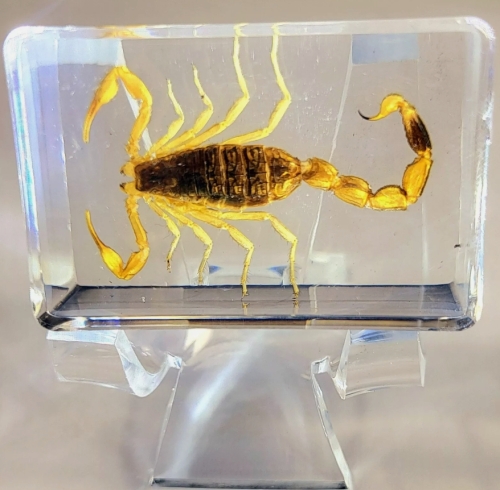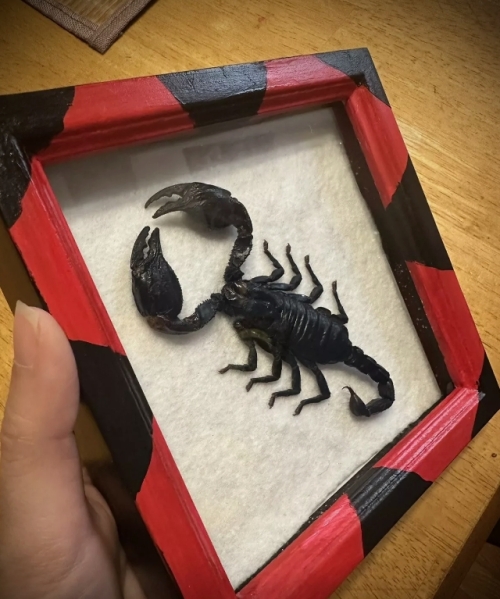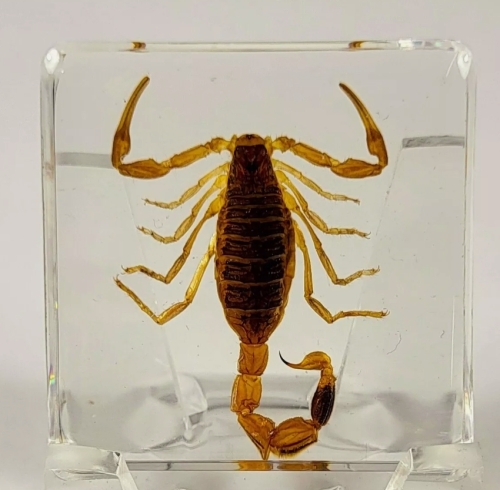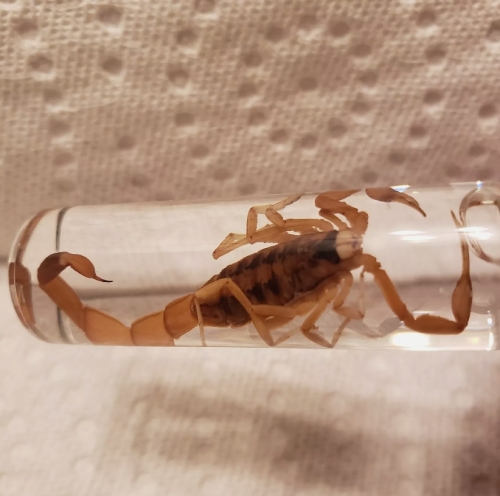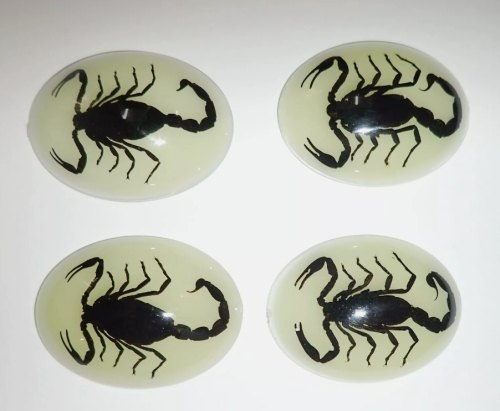Scorpions, ancient and mysterious creatures, have thrived on the earth since hundreds of millions of years ago. Their cool appearance, usually with a hard shell and long tail with a stinger at the end, makes them unique in nature. As a specimen, scorpion not only has significant scientific value, but also carries many cultural and historical significance.
Scorpion specimens have played an important role in scientific research. By preparing specimens, researchers can more clearly observe the scorpion's anatomy, behavior and ecological distribution. This information is not only helpful to biologists, but also provides important clues to our understanding of the complexity of ecosystems. Scorpions in the specimen provide a more intuitive sense of their physical features, such as their distinctive eight feet and elongated limbs, giving a deeper understanding of the diversity of this invertebrate.
In addition, scorpion specimens are full of artistic charm. Many people like to collect insect specimens and carefully frame them in display cases to form a unique decoration. The scorpion's beautiful shape and rich colors make its specimens a popular collection object. They quietly show the gesture of life, let people have infinite reverie about the wonders of nature.
In some cultures, scorpions represent strength, courage and protection. Scorpions play an important role in many folklore and mythology stories, symbolizing the balance between life and death, Yin and Yang. Making scorpion specimens is not only a treasure of life, but also a trace of cultural heritage. Through these specimens, future generations can better understand the beliefs and lives of the ancients.
With the deepening of people's understanding of nature, the study of scorpion specimens will become more and more important, involving ecological protection and biodiversity. Therefore, not only as a tool for scientific research, but also as a bridge connecting us with nature, history and culture.


